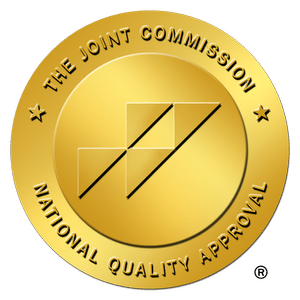Overview
Suicidal ideation is a complex and distressing phenomenon characterized by persistent thoughts, fantasies, or urges related to ending one’s own life. These thoughts can range from fleeting considerations to detailed plans, encompassing both passive and active forms.
Passive ideation involves a desire for death without specific plans or intent to act on those thoughts, while active ideation includes concrete plans or intentions to carry out suicide.
In this article, I provide a comprehensive overview of the topic, including practical tips and resources for helping yourself or another person.
Suicidal ideation exists on a spectrum, and individuals experiencing it may struggle with feelings of hopelessness, despair, and worthlessness. Factors such as mental illness, trauma, substance abuse, and overwhelming life stressors can contribute to the development of suicidal thoughts. Understanding the signs and risk factors associated with suicidal ideation is essential for effective prevention and intervention efforts.
Addressing suicidal ideation requires a multifaceted approach that encompasses psychological support, therapy, medication if necessary, and the cultivation of a supportive environment. By fostering open communication, reducing stigma, and providing accessible mental health resources, we can work towards preventing the tragic loss of life associated with suicidal ideation.
Types of Suicidal Ideation
Suicidal ideation manifests in various forms, each carrying its level of risk and urgency for intervention. Understanding the types of suicidal ideation is essential for recognizing warning signs and providing appropriate support. Two primary categories of suicidal ideation are active and passive.
Active Suicidal Ideation
Active suicidal ideation involves specific thoughts, plans, or intentions to end one’s own life. Individuals experiencing active suicidal ideation may have formulated detailed plans, acquired means to carry out the act and exhibit a heightened sense of urgency. For example, someone actively contemplating suicide might express thoughts like, “I’ve been researching ways to overdose on pills,” or “I know exactly when and how I’m going to do it.”
Passive Suicidal Ideation
On the other hand, passive suicidal ideation encompasses thoughts of wanting to die without a clear plan or intent to act on these thoughts. While individuals with passive suicidal ideation may wish for death or express a desire to cease existing, they may not have taken steps toward carrying out suicide. An example of passive suicidal ideation could be someone saying, “I wish I could just disappear,” or “I don’t see the point in living anymore.”
The Key: Is There a Plan?
The crucial distinction between passive and active suicidal ideation lies in the presence or absence of concrete plans or intentions to end one’s life. Passive suicidal ideation involves a desire for death without a plan to act on these thoughts, while active suicidal ideation includes specific plans or intentions to carry out suicide. This differentiation is vital for assessing the level of risk and determining the appropriate interventions.
Passive suicidal ideation, while still concerning, may present a lower immediate risk compared to active ideation. However, it’s essential not to dismiss passive ideation as less serious, as it can escalate if left unaddressed. Both forms of ideation warrant attention and support from mental health professionals, friends, and family members.
Recognizing the signs of passive and active suicidal ideation is critical for early intervention and prevention of suicide attempts. Individuals exhibiting any signs of suicidal ideation should be taken seriously, and appropriate steps should be taken to ensure their safety.
Encouraging open communication, providing non-judgmental support, and connecting individuals with mental health resources can be life-saving interventions in addressing suicidal ideation.

Warning Signs of Suicide
Recognizing warning signs of suicide is crucial for early intervention and support. Several behavioral cues may indicate that an individual is experiencing suicidal ideation:
Expressing feelings of hopelessness or worthlessness: Persistent feelings of despair and low self-esteem can be indicative of suicidal thoughts.
Withdrawal from social activities: Sudden isolation or disengagement from previously enjoyed activities and relationships may signal underlying distress.
Talking about death or suicide: Direct or indirect references to death, dying, or suicide should be taken seriously.
Giving away possessions: Individuals contemplating suicide may give away prized possessions as a way to tie up loose ends.
Increased substance use: Escalating alcohol or drug consumption can be a coping mechanism for dealing with emotional pain.
Sudden mood changes: Noticeable shifts in mood, such as extreme sadness, agitation, or irritability, may be red flags.
Changes in sleep patterns or appetite: Disrupted sleep or appetite can be symptomatic of underlying mental health struggles.
Reckless behavior: Engaging in risky activities without regard for personal safety can indicate a lack of concern for one’s own life.
Saying goodbye: Expressions of farewell or making final arrangements without a clear reason can be alarming signs.
Seeking access to lethal means: Attempts to obtain firearms, medications, or other potentially lethal items may signal intent to harm oneself.
Suicide Rating Scales
Professionals and loved ones can utilize various tools to assess and identify suicidal ideation. One widely used tool is the Columbia Suicide Severity Rating Scale (C-SSRS). This scale is a brief, evidence-based assessment designed to evaluate suicidal ideation and behavior. It helps clinicians and caregivers determine the severity of suicidal thoughts and behaviors, assess risk factors, and develop appropriate intervention strategies.
The C-SSRS comprises:
- Structured questions covering multiple aspects of suicidal ideation
- Severity, frequency, and intent
- Passive and active suicidal ideation
- Suicidal behavior
- Suicide attempts
By systematically probing the individual’s experiences and intentions regarding suicide, the C-SSRS assists in determining the level of risk and guiding treatment decisions.
Overall, the warning signs of suicide are multifaceted, and early detection is key to preventing tragic outcomes. Utilizing tools like the Columbia Suicide Severity Rating Scale or the Minnesota Suicidal Ideation Risk Assessment can aid in identifying individuals at risk and facilitating timely intervention and support.
Treatment and Intervention
When suspicion arises that someone, including oneself, may be experiencing suicidal ideation, swift and compassionate intervention is paramount. Here are steps to take in such situations:
- Take it seriously: Any indication of suicidal ideation, whether passive or active, should be treated with the utmost seriousness. Avoid dismissing or minimizing the person’s feelings or thoughts.
- Listen actively: Provide a supportive and non-judgmental space for the individual to express their thoughts and emotions. Active listening can help them feel heard and understood, reducing feelings of isolation and despair.
- Express concern: Communicate your concerns directly and compassionately. Let the person know that you care about their well-being and want to help them get the support they need.
- Encourage professional help: Strongly encourage the individual to seek professional help from a mental health professional, such as a therapist, counselor, or psychiatrist. Emphasize that seeking professional support is a sign of strength and courage.
- Offer practical assistance: Assist the person in scheduling appointments, finding resources, or contacting supportive friends or family members. Help them navigate the process of accessing mental health services.
- Remove access to lethal means: If possible, limit access to firearms, medications, or other potentially lethal items that could be used for self-harm. This can help reduce the immediate risk of suicide.
- Stay connected: Maintain regular contact with the individual and check their well-being regularly. Let them know that you are there to support them through their journey to recovery.
It’s important to underscore the importance of professional help for individuals experiencing suicidal ideation, regardless of its type or severity. While passive suicidal thoughts may be considered of lower immediate risk than active thoughts, they should still be taken seriously due to their potential to escalate. Professional intervention can provide the necessary support and guidance to address underlying mental health issues and develop coping strategies.
Treatment for suicidal ideation in Utah often involves a combination of therapy, medication, and in some cases, hospitalization to ensure the individual’s safety. Therapy, such as cognitive-behavioral therapy (CBT) or dialectical behavior therapy (DBT), can help individuals explore and address the underlying factors contributing to their suicidal thoughts. Medications, such as antidepressants or mood stabilizers, may be prescribed to alleviate symptoms of depression or other mental health conditions.
In cases where there is an imminent risk of harm to oneself, hospitalization may be necessary to provide round-the-clock supervision and ensure the individual’s safety. Hospitalization can also offer intensive therapeutic interventions and stabilization until the person’s condition improves.
Overall, seeking professional help is essential for individuals experiencing suicidal ideation, as it can provide the support, guidance, and treatment needed to overcome suicidal thoughts and regain a sense of hope and purpose in life.
Impact of Substance Use
The relationship between substance use and suicidal ideation is complex and multifaceted, with substance abuse often exacerbating feelings of hopelessness, despair, and impulsivity. Understanding this connection is crucial for effective prevention and treatment strategies.
Substance use, including alcohol and drugs, can significantly impact mental health and contribute to the development or intensification of suicidal ideation. Here are several ways in which substance use can influence suicidal thoughts and behaviors:
Depression and Anxiety
Substance abuse is closely linked to mental health disorders such as depression and anxiety, which are significant risk factors for suicidal ideation. Individuals may turn to drugs or alcohol as a means of self-medication to alleviate emotional distress. Still, these substances can ultimately worsen symptoms and increase the risk of suicidal thoughts.
Impulsivity
Substance use can impair judgment, increase impulsivity, and lower inhibitions, making individuals more likely to engage in risky behaviors, including self-harm and suicidal acts. Inhibitions against acting on suicidal thoughts may be diminished under the influence of drugs or alcohol, leading to impulsive and potentially lethal decisions.
Hopelessness
Chronic substance abuse can exacerbate feelings of hopelessness and despair, particularly when individuals experience negative consequences related to their substance use, such as strained relationships, financial problems, or legal issues. These feelings of hopelessness can contribute to the development of suicidal ideation as individuals perceive suicide as the only way to escape their seemingly insurmountable problems.
Biological Factors
Substance use can have direct effects on brain chemistry, altering neurotransmitter levels and disrupting normal brain function. These neurobiological changes can contribute to mood disturbances and exacerbate underlying mental health conditions, increasing the risk of suicidal ideation and behavior.
Social Isolation
Substance abuse often leads to social isolation and withdrawal from supportive relationships, which can further exacerbate feelings of loneliness, alienation, and despair. Social support is a critical protective factor against suicidal ideation, and the breakdown of social connections due to substance abuse can leave individuals feeling even more vulnerable and alone.
Alcohol
One of the most commonly abused substances, alcohol is particularly notorious for its role in increasing the risk of suicidal ideation and behavior. Alcohol acts as a central nervous system depressant, exacerbating feelings of depression and hopelessness. Moreover, alcohol impairs judgment and cognitive function, increasing the likelihood of impulsive and reckless behavior, including suicide attempts.
Opioids, Benzodiazepines, and Stimulants
Similarly, drugs such as opioids, benzodiazepines, and stimulants can significantly impact mental health and increase the risk of suicidal ideation. Opioids, for example, can induce depressive symptoms and exacerbate feelings of despair, while stimulants like cocaine or methamphetamine can lead to paranoia, agitation, and impulsivity, heightening the risk of suicidal behavior.
Prevention and Treatment
Recognizing the impact of substance use on suicidal ideation is essential for developing comprehensive prevention and treatment approaches. Prevention efforts should focus on reducing substance abuse through education, early intervention, and access to effective substance abuse treatment programs.
Treatment for individuals struggling with both substance use disorders and suicidal ideation should address both issues simultaneously, addressing underlying mental health conditions, providing coping strategies, and promoting healthy, substance-free lifestyles.
Integrated treatment approaches that combine therapy, medication-assisted treatment, and support services can be effective in addressing the complex needs of individuals with co-occurring substance use and mental health disorders.
Additionally, interventions aimed at reducing access to lethal means, promoting social support networks, and enhancing coping skills can help mitigate the risk of suicidal behavior among individuals struggling with substance abuse.
By understanding the relationship between substance use and suicidal ideation and implementing targeted prevention and treatment strategies, we can work towards reducing the devastating impact of substance-related suicide and supporting individuals in achieving lasting recovery and emotional well-being.

Key Takeaways
- Suicidal ideation is a complex and distressing phenomenon characterized by persistent thoughts, fantasies, or urges related to ending one’s own life.
- These thoughts can range from fleeting considerations to detailed plans, encompassing both passive and active forms.
- Suicidal ideation exists on a spectrum, and individuals experiencing it may struggle with feelings of hopelessness, despair, and worthlessness.
- Suicidal ideation manifests in various forms, each carrying its level of risk and urgency for intervention.
- Passive ideation involves a desire for death without specific plans or intent to act on those thoughts, while active ideation includes concrete plans or intentions to carry out suicide.
- Active suicidal ideation involves specific thoughts, plans, or intentions to end one’s own life.
- Suicidal ideation exists on a spectrum, and individuals experiencing it may struggle with feelings of hopelessness, despair, and worthlessness.
- Recognizing warning signs of suicide is crucial for early intervention and support.
- Professionals and loved ones can utilize various tools to assess and identify suicidal ideation.
- The relationship between substance use and suicidal ideation is complex and multifaceted, with substance abuse often exacerbating feelings of hopelessness, despair, and impulsivity.
Reach out to Corner Canyon Health Centers if you or someone you know has suicidal thoughts. We’re here to help.
Resources
- Contact the 988 Suicide and Crisis Lifeline if you are experiencing mental health-related distress or are worried about a loved one who may need crisis support.
- Call or text 988. Connect with a trained crisis counselor. 988 is confidential, free, and available 24/7/365.
- Visit the 988 Suicide and Crisis Lifeline for more information at 988lifeline.org
- National Suicide Prevention Lifeline 1-800-273-TALK(8255)
- SAMHSA (Substance Abuse and Mental Health Services Administration)












